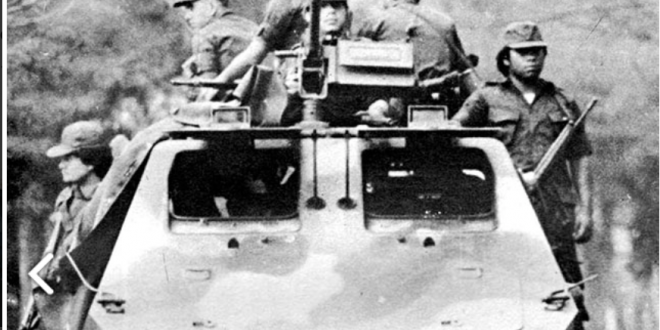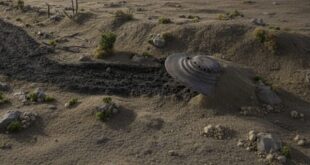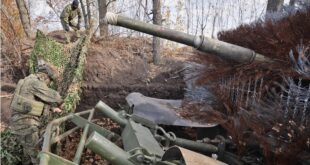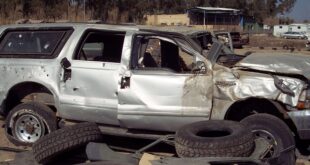EL PARAISO AND
THE WAR IN EL SALVADOR (1981–1983)
by Charles H. Briscoe, PhD for SOC.mil
From 1980–1993, the government of El Salvador, with U.S. assistance, waged a national counterinsurgency (COIN) campaign against guerrilla forces of the FMLN (Frente Farabundo Marti de Liberación Nacional). That COIN campaign was one of the few successful efforts in recent history. U.S. Army SOF, performing FID (Foreign Internal Defense) missions in support of the U.S. Military Group (USMILGP) El Salvador, played a significant role. However, it was the Salvadoran national strategy, not the military strategy, that brought an end to the insurgency. Nobody “won” the war. The losers were the victims of the fighting. The thirteen-year insurgent war was ended by negotiation. Concessions were made by both sides to end the fighting, to bring peace to the country, and to do so without reprisals to either side.
The purpose of this article is to show what it took to begin transforming a small, poorly trained conventional military and security force into an effective armed force capable of waging a successful COIN war. The transformation did not happen in one, two, or three years as some have hoped could be done in Afghanistan and Iraq. The Salvadoran military had to be tripled in size, trained, and equipped to fight ever-growing guerrilla forces that were supplied by Cuba and Nicaragua. And, the FMLN kept changing its strategy and tactics.

In the midst of this evolving war, the 4th Brigade base (fortified camp) at El Paraiso in the Department of Chalatenango was attacked in 1981 and 1983.1 The progress that was being made in other areas had little impact on Salvadoran static defense strategy. But, when assessed in conjunction with the total Salvadoran military “ramp-up” to fight a COIN war, the “acceptability” of the attacks on El Paraiso will help ARSOF soldiers understand and appreciate the dynamics associated with evolving military campaigns that are being prosecuted in Afghanistan, Iraq, Colombia, and the Philippines, with or without national strategies.
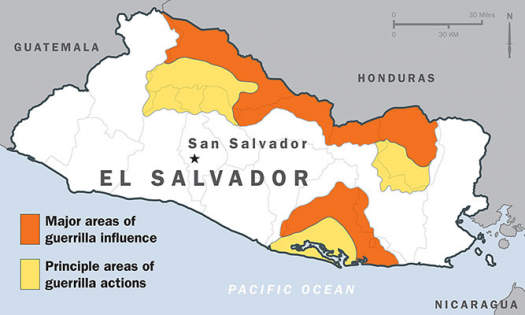
In 1980, El Salvador, one of the most densely populated (nearly six million people) and smallest countries in the world (the size of Massachusetts), had 10,000 armed forces to protect national interests and 7,000 paramilitary police and internal security forces to maintain law and order. The army (about 9,000 on paper) was organized into four infantry brigades, an artillery battalion, and a light armored battalion.2 All units and headquarters were small by American standards. The politically-aligned Salvadoran officer corps had been split when conservative senior officers engineered a presidential coup in October 1979. However, this did not alter their conventional war mindset that posed Honduras as an external threat and discounted the growing internal insurgency. Fortunately, the Salvadoran insurgent groups operated independently from 1970–1979.3 Their lack of unity prevented effective action.
On 10 October 1980, the FMLN front was formed at the behest of the Cubans. Its Central Command, with representatives from the five major organizations, was a coordinating body. The front, composed of some 10,000 guerrillas in late 1980, was not an organic, unified force. It was a confederation of insurgent organizations, each having its own dogma, fighting element, and controlling separate areas (see sidebar).
“The Cubans became the managers, and Nicaragua the warehouse and bridge of solidarity. Nicaragua, the Cubans decided, would be the base of operations for political, diplomatic, and logistic affairs. The Sandinistas would arrange the shipment of arms and munitions to the FMLN and decide how they would be divided among the insurgent organizations that had joined the front,” explained Napoleón Romero Garcia (Comandante Miguel Castellanos) in 1985.4

Two of the main guerrilla supply routes from Honduras into El Salvador were through the bolsones(pockets) areas in northern Chalatenango and Morazán. The bolsones were disputed, demilitarized areas along the southern border of Honduras that dated to the 1969 war between the two countries. In addition to housing numerous refugee camps, the bolsones became focos (centers) for Salvadoran guerrilla training base and supply distribution points. The campesinos in the refugee camps proved willing recruits. These overland routes were augmented by sea and air delivery sites.5
SIDEBAR: The 1969 El Salvador–Honduras War
With a conventional war mentality (defense against Honduran retaliation for its 1969 incursion), the Estado Mayor (General Staff) moved the 4th Brigade into the Chalatenango Department. A second, large fixed base blocking a primary Honduran invasion route would reinforce the DM-1 (Destacamento Militar Uno) district cuartel in Chalatenango (city), in the midst of the FPL foco. That conventional war mindset made the 4th Brigade at El Paraiso a very convenient guerrilla target. To the east, in the Department of Morazán, the DM-4 cuartel at San Francisco de Gotera was located near the border, along another access corridor in an ERP foco.6
SIDEBAR: Cuarteles versus Bases
The 3rd Brigade base, positioned near San Miguel, the second-largest city in the country, had been located there for similar reasons. The proximity of these Salvadoran military bases and cuartels near FMLN epicenters made them very lucrative political, military, and psychological targets. Despite their locations astride two major FMLN supply routes, they did little to hinder guerrilla logisticians in the early years of the war.

Before 1981, the FMLN insurgent elements had been regarded as internal threats by the military-dominated governments of El Salvador. Law and order problems were the responsibility of the paramilitary Guardia Nacional in the countryside, Polícia Nacional (national police) in the cities, the customs/border police (Polícia de Hacienda), and intelligence security forces, that cooperated with “death squads,” much like they did in Colombia in the 1980s and 1990s. In 1980, all three Salvadoran police elements numbered only 3,000 personnel.7 Political unrest, evinced by demonstrations, insurgency, and terrorist acts, was traditionally brutally repressed, as it was in most Latin American countries, by security forces. Rightist “death squads” augmented official efforts to eliminate internal threats.8 The Salvadoran Army, focused on external security, placed its forces to defend the country.

The 4th Brigade base, one of the newest and most modern in the Army, was a sprawling facility that covered a square kilometer. Flat land for easy, fast construction had determined its specific location, not defensible terrain. It occupied a saddle between Loma (steep hillock) El Espinal to the north and Loma Lisa to the south and adjacent to the Truncal del Norte highway (San Salvador through Chalatenango into Honduras), two hundred meters to its south. The small town of El Paraiso was about a kilometer and a half (by road) to the northeast. A long-extinct volcano, El Guayabo, was less than two kilometers to the northwest, and a major inlet of Cerron Grande (a lake and dam for hydroelectric power) was about a kilometer to the southeast (see map insert). Effective fire could be placed on the interior of the camp from several of the lomas that surrounded it.9

The 4th Brigade, numbering about 1,200 men in 1980, consisted of three understrength infantry battalions of poorly trained conscripts. Brigade commanders were responsible for the protection of infrastructure—dams, bridges, electric power generators, radio-relay sites, and other key governmental installations—against guerrilla attacks. Thus, 60–80 percent of the 4th Brigade soldiers routinely manned static defense sites (from squad to company size) outside the base.10 That was the situation when the newly formed FMLN thought it was possible to overthrow the Salvadoran government.
Emboldened by the Sandinista victory against U.S.-supported Anastasio Somoza Debayle in Nicaragua in 1979, President Jimmy Carter’s suspension of military aid to El Salvador after “security forces” killed four American church women in December 1980 reinforced their commitment. The “final offensive” was based on five assumptions:
- That carefully organized strikes would lead to popular uprisings in cities and towns;
- That 3,000 fighters would win decisive victories against Chalatenango, Morazán, and La Paz cuarteles and bases;
- That some Salvadoran units would mutiny, surrender their bases or cuarteles, and align with the insurgents;
- That the Military Junta-led government was so unstable that a major offensive would cause its popular repudiation; and
- That the “lame duck” Carter administration would do nothing.11
About 5:00 p.m. on 10 January 1981, the FMLN launched attacks against forty-three military and police sites throughout the country. The size and breadth of the offensive was greater and its gravity more serious than the disruption of the coffee harvest anticipated by Salvadoran military and security forces.12 Captain Juan Francisco Mena Sandoval led a mutiny in the 2nd Brigade, killed Lieutenant Colonel Francisco Baltazar Valdés, set the Santa Ana base afire, and took 150 soldiers to join the ERP. That was totally unexpected and fear wracked the officer corps until the FMLN assaults sputtered out on 18 January.13
“There was no surprise,” recounted Comandante Miguel Castellanos. His attack on the Zacatecoluca garrison failed, as did another against the guard post at Fecoluca. “Our lack of communications was a serious weakness, as was the absence of artillery support. The people did not rise up, nor was there a general strike.”14 The attacks were not controlled nor coordinated. The separate attack forces had to rely on Radio Liberación, focused on trumpeting propaganda from Managua, for news and direction. The FMLN Central Command in Nicaragua had no sense of reality (situational awareness). It was obvious to the guerrilla combatants that, separately, they were not capable of taking a base or cuartel.15
The 4th Brigade at El Paraiso and DM-1 at Chalatenango withstood the assaults, but the 1981 offensive was the first time that the Salvadoran government had really been pressured by the insurgent groups. The threat was sufficient to prompt President Carter, accused of “losing” Nicaragua to the Communists (Sandinistas), to reinstate military assistance and add $5.9 million in lethal aid.16 However, after withstanding the offensive, Salvadoran military leaders were left with a false impression of their operational capability to combat the guerrillas. The renewed U.S. aid further bolstered confidence, encouraged a return of government support to “death squads,” promulgated lax security in the field, and justified the dispatch of Special Forces mobile training teams (MTTs).
In March 1981, with President Ronald Reagan in charge, Special Forces MTTs began arriving in El Salvador to train and equip the 9,000-man Salvadoran army to counter the FMLN insurgency—to fight a COIN war. Numbers were kept small to satisfy Congressional concerns that El Salvador would not become another Vietnam-like quagmire. These MTTs from Panama were expected to quickly convert a poorly trained and ill-equipped conventional army into a COIN force capable of defeating an estimated guerrilla force of 4,000, a prospect that The New York Times had judged that government forces “had no hope” of doing.17
However, in three years, forty Special Forces MTTs managed to convert that conventional army into a COIN force capable of combating the insurgents.18 But, it was not done easily, and most often without the support of senior Salvadoran commanders. “With no training nor experience in counterinsurgency warfare, the Salvadoran officers ‘did what they thought that they knew how to do,’ whether it was the right thing against guerrillas or not. A battalion movement to contact was a single column (line) of some 700 soldiers,” recalled SF Captain William R. “Bobby” Nealson.19 Lieutenant colonels “commanded” these offensive operations from the base tactical operations center (TOC) with the AN/PRC-77 radio (seven–ten kilometer range) powered by 110-volt electricity.20 “Maps were scarcer than radio batteries. Artillery forward observers were not attached to brigades and the infantry captains and majors leading in the field did not know how to call for supporting fire,” remembered SF Major Cecil Bailey.21 Colonel Reyes Mena, the 4th Brigade commander, objected to the Estado Mayor directive on MTTs, and gave little support to CPT Nealson’s attempt to conduct unit training. The 4th Brigade officers “didn’t see the need for us. They [felt that they] were perfectly capable of training their own units,” said Nealson.22 Fortunately, more support was provided at national level by a U.S. Southern Command (SOUTHCOM) team.

Brigadier General Frederick F. Woerner, 193rd Infantry Brigade commander in Panama, and six officers were sent to evaluate the Salvadoran capabilities to wage a COIN war in the spring of 1981 and to recommend a military strategy. The Woerner Report (“Report of the El Salvador Military Strategy Assistance Team”), as it became known, recommended tripling the size of the Salvadoran Army combat forces and reorienting Salvadoran doctrine and tactics to fight a COIN war. Ten additional infantry battalions would increase the ground force to twenty-five battalions. Eight of these would mirror existing Salvadoran battalions while two were organized as quick reaction battalions, like the Atlacatl Battalion being trained by SF MTTs (March–August 1981). Better command and control and improved communications, intelligence, and logistics capabilities were also recommended. Specific materiel and equipment packages to arm, equip, and rapidly transport these new units contained everything from combat boots to UH-1M Huey helicopter gunships. Training was to focus on small unit offensive operations.23
To support rapid force expansion, the Estado Mayor agreed to send some 500 officer candidates to the United States to be trained as small unit leaders to fill the new units. The Estado Mayor had to recruit, train, and field four new battalions before March 1982, the date for national elections.24 Increased military aid was contingent on the Salvadoran military protecting, but not interfering with, the elections.25 Knowing the limitations of developing a military strategy without a national strategy, General Woerner had to make assumptions—the appropriate national objectives for an emerging democracy—and make his military strategy recommendations consistent with them. He had little choice. His mission was to develop a strategy in two months.26

While the Woerner Report concentrated on “hard” elements of combat capabilities and left the “soft” elements vital to a successful counterinsurgency effort—psychological operations and civil affairs—for later, the plan satisfied President Reagan’s desire to militarily prevent an insurgent takeover in El Salvador.27 That decision was timely because the FMLN, flush with arms and supplies from Nicaragua to equip and train its growing numbers of fighters, had decided to change tactics. “Hit and run” attacks on lightly-protected infrastructure targets enabled new recruits to be trained and the effects would destroy popular confidence in the government. Their major objective was to physically obstruct the Constituent Assembly elections in 1982. That Assembly was to draft a new constitution establishing democratic government in 1984.28 A first “line in the sand” had been drawn for both sides. Fortunately, a Military Group commander with COIN experience in Latin America was assigned to the country team of Ambassador Deane R. Hinton in March 1982.

Special Forces Colonel John D. Waghelstein, a veteran of the 8th SF Group (SFG) in Panama in the 1960s, had served in the Dominican Republic and Bolivia. COL Waghelstein would direct the Salvadoran military expansion, training, and help formulate a national campaign plan. It was to be done with fifty-five U.S. military trainers in country as mandated by Congress. “The number ‘55’ had been chipped in stone . . . the result of a mélange of Vietnam syndrome, Liberal Democrat opposition to our Central American policy in Congress, the ESAF’s [El Salvadoran Armed Forces] lousy human rights record, and the tenuousness of our long-term commitment,” said Waghelstein.29 Ingenuity and innovation became key to mission accomplishment.
Alternate ways had to be found to train the new battalions. To become more effective and reduce risk to civilians, the Salvadoran Air Force formed a reconnaissance company, the Compania de Patrulla Reconacimiento de Alcance Largo (PRAL) of volunteers to be trained by 3/7th SFG personnel in Panama from July through September 1982. The Air Force’s airborne company was expanded to a battalion several months later.30 In late 1982, a Venezuelan MTT organized and trained three 350-man Cazador (Hunter) battalions (similar to those trained by the 8th SFG in the 1960s) in a compressed six-week program.31 The Cazadores were to be lightly armed, lightly equipped mobile battalions of veteran soldiers that could deploy with little notice. Some Salvadoran commanders liked these light battalions because they were easier to support, field, and control than their traditional 600–700-man infantry battalions. They could also be trained and fielded in six-weeks versus the six-months required for immediate reaction battalions [(BIRI) Batallón de Infantería Reacción Inmediata]. They were assigned to the brigades, whereas the Estado Mayor controlled the BIRIs. The Salvadoran Cazadores, however, like most Salvador battalions, were comprised of conscripts with some basic infantry training.32While more Cazador battalions were activated than any other type to satisfy U.S. aid quotas, they proved no match for the well-armed and equipped 600-man battalions being fielded by the FMLN in northern Morazán and Chalatenango in late 1982.33Stateside training of Salvadoran battalions proved extremely expensive.
The Ramón Belloso Battalion (BIRI) was trained by 1st Battalion, 7th SFG, at Fort Bragg, North Carolina, from January–June 1982 for $12 million in U.S. military aid. That was what it cost the Salvadorans to equip and train four infantry battalions at home. The Atonal Battalion, another BIRI, began training in Panama, received an accelerated ten-week basic training program at El Paraiso from an MTT to meet the March 1982 election deadline, before yet another experiment was tried.34
A U.S.-funded regional military training center (RMTC) was created at Puerto Castillo, Honduras, to quickly train Salvadoran units without the distraction of combat operational requirements. Some 2,400 Salvadoran conscripts would undergo basic infantry training alongside Honduran and other isthmian soldiers. Enmity pervaded the atmosphere when battalion-sized groups of Salvadoran conscripts, traditionally trained in brigades, were sent to be trained by Americans on Honduran soil. The Salvadoran military resented this diversion of U.S. military aid to their enemies and the brigade commanders did not like losing that source of revenue.35 The Honduran airborne battalion was the token element “trained” at the RMTC. Progress was slow.
Since FMLN strongholds along the Honduran border and in southern El Salvador were simply too strong in the early 1980s for the government forces to attack directly, the Salvadoran Air Force (FAS) began bombing and strafing rebel-dominated villages. The harassment attacks in Chalatenango and on the Guazapa Volcano, thirty miles from the capital, did not prevent the FMLN destruction of several Salvadoran infantry units and the loss of significant numbers of weapons.36 In the meantime, COL Waghelstein and a small SF Planning MTT had begun working to bring a strategic focus to ESAF operations.
The resultant National Campaign Plan (NCP) was a combined civil-military strategy to regain government support. The battalion “sweeps” against elusive guerrillas were disrupted by mines, booby traps, and ambushes, while FMLN forces targeted small Salvadoran outposts guarding infrastructure. These demoralized the military and sabotaged the national economy, further eroding confidence in the government.37 The economy had been in a fatal tailspin for three years. There was an obvious connection to the effects of the war, especially since the FMLN had publicly stated that the economy was their principal target.
Waghelstein: “I was convinced that the real target was to gut the Salvadoran economy and that all the shooting and all the attacks . . . on the various cuarteles were just smoke, that the real target was economic and not military.”39 SF Master Sergeants Bruce Hazlewood and Leon Sonnenberg were sent out to collect data on railroad, electrical grid, crop dusting, agricultural irrigation systems, bridges, airports, seaports, and highway traffic attacks and they prepared a map overlay for each. “When they had fifteen or twenty piled on top of the El Salvador map, it was obvious even to a blind man that the focus was on the departments of Usulutan and San Vicente,” said Waghelstein.40 Then, they added known guerrilla resupply points, supply routes, base camps, caches, and unidentified aircraft sightings to provide more emphasis to the findings. President Alvaro Magaña and the Estado Mayor had to agree with the assessment. “By February 1983, the Salvadorans were working on a joint military-civilian plan [National Campaign Plan (NCP)] aimed at securing the central departments of San Vicente and Usulutan and to reestablish government services and authority,“ said Waghelstein.41
The concentration of BIRIs in San Vicente and successes achieved made the other parts of the country more vulnerable. It has to be remembered that the national strategy priority was to protect the infrastructure and preserve the economy. Community Civil Defense had been made an integral part of the National Campaign Plan. Many assessed the NCP as a failure, calling it a “sand castle on the beach” because the FMLN returned to dominate San Vicente when the joint “experiment” ended. But, the necessity for a national COIN strategy having specific civil-military priorities was realized at a time when major leadership shakeups enabled the Salvadoran government to capitalize on U.S. assistance for several years.
The Salvadoran military shakeups were triggered by the visit of Vice President George W. Bush, who carried an ultimatum from President Reagan. In a speech to the top Salvadoran leaders, civilian and military, Bush stated that “if these death squad murders continue, you will lose the support of the American people” and presented the requirements for further U.S. military aid.42 These requisites included a list of Salvadoran officers known to have conspired with the “death squads” and demanded their relief and expulsion from the ESAF immediately.43 A new Minister of Defense, General Casanova Vides, began assigning competent field commanders to brigade command positions, without regard to seniority, and pulled those experienced field commanders to the Estado Mayor to direct the war.44 Just a few months earlier, the Central Command of the FMLN inadvertently assisted the Salvadoran military.



The FMLN hierarchy in Managua convulsed into internecine power struggles after the murder of Ana Mélida Anaya Montes (Comandante Ana María), second in command of the FPL on 6 April 1983. That was subsequently followed by the suicide of Salvador Cayetano Carpio (Comandante Marcial), founder of the FPL, the majority faction of the FMLN.45 By 1984, the infighting within the leadership of the FMLN groups was severe. In true Communist fashion, purges and executions of the leaders were carried out. Guerrilla strength declined as rebel troops watched their leaders abandon the FMLN in disgust.46It ended when Fidel Castro got the Central Command to relocate from Managua into the interior of El Salvador in October 1983. The FDR elected to remain in Nicaragua, but the perceived legitimacy of the FMLN had already been eroded by its predominantly military strategy.47 The respite for the Salvadoran military, however, proved short.

The FMLN initiated a series of impressive military actions countrywide in the wake of Vice President Bush’s visit. The most serious was the attack on the Cuscutlan Bridge on New Year’s Eve 1983. It was the FMLN’s second major success on Lempa River bridges. The 1981 destruction of Puente de Oro had been a major embarrassment to the ESAF. But, the attack on the 4th Brigade headquarters at El Paraiso on 28 December 1983 was even more demoralizing.
By then, the guerrilla fighting units were larger (300–800 personnel), better armed, more willing to cooperate, had radios to coordinate attacks and support, and most had special commando “sapper” platoons trained by the Vietnamese. Central Command wanted to “prove” its new large units and demonstrate to the Cubans and Sandinistas the new spirit of cooperation by conducting a spectacular operation. Overrunning an army base would strike a political blow and inflict a military defeat. The 4th Brigade base at El Paraiso fit their criteria.48 A group of Fuerzas selectas especiales(FES) sappers spent months collecting intelligence and preparing attacks.
The result was a well-rehearsed, well-executed primary attack against El Paraiso with diversionary actions to draw Salvadoran troops away from FMLN assembly areas beforehand and then attacks to block reinforcements from DM-1 in Chalatenango. The date was based on when the least number of soldiers (an infantry company) would be at the base. Infiltrators had been very useful. At 10:00 p.m. 28 December 1983, fifty mud-caked FPL sappers, clad only in shorts, and carrying German MP-5, Israeli Uzi, or American CAR-15 sub-machineguns (SMG), and two U.S. M-26 fragmentation grenades, cut several holes in the barbed wire perimeter fence and began marking routes through the minefields.49
Two hours later, the sapper force triggered an 81mm mortar barrage by throwing grenades into bunkers and the TOC and then gunning down confused, screaming soldiers running from their billets to fighting positions. When the thirty to forty-five minutes of indirect fire ended, some 300 guerrillas from the Chalatenango Battalion X-21 (FPL), hidden along the outer fence, charged through the openings along “safe” paths in the minefields, inside the base interior.
Outside the base, another FPL battalion from Chalatenango (K-93) attacked El Refugio, El Barrancon in La Reina, and the Colima bridge to block relief forces.50 In the midst of these well-coordinated FPL attacks, a single American SF advisor, who had been checking strategic sites (the Cuscutlan bridge near San Miguel and the Colima bridge in Chalatenango), managed to escape from the base in the midst of the chaos. In civilian clothes, he slipped away to find shelter in the outskirts of Chalatenango. Then, carrying only his weapon, he evaded FMLN units for a day and a half while working his way back to San Miguel.51

As soon as all resistance was eliminated, the guerrillas, who would occupy the base for another two days, ransacked the facility, collecting useful material and equipment. Some five hundred of six hundred weapons captured were American M-16 rifles. Using three kilogram explosive charges (bloques), they systematically destroyed the buildings, bunkers, and heavy equipment. More than a thousand TNT bloques were used during the assault and destruction afterward.52 By then, Salvadoran relief (an airborne company and the Atlatcatl Battalion) had surrounded the base.53
The FMLN threatened to kill the military and civilians taken prisoner. The Salvadoran military had no choice but to negotiate. A convoy of seventeen operable 4th Brigade trucks and busses was formed to carry the guerrilla force, their hostages, and accumulated “booty.” They were allowed to leave unhindered and were last seen driving north toward La Palma.54 Ten guerrillas were reportedly killed during the attack. More than two hundred Salvadoran soldiers and camp workers were killed or captured in the attack. The only FMLN failure in the Chalatenango Department was at the Colima Bridge. Attempts by Cuban-trained FPL combat swimmers to collapse the bridge failed on 30 December and in mid-January 1984 because of faulty explosive fuses.55


FMLN attacks on the 4th Brigade at El Paraiso became almost routine during the war. Close proximity to the Honduran border provided easy escape for the FPL, the most active and better armed of the FMLN elements in the region. The FPL targeted this base for several reasons: operational activity patterns were apparent; poor security measures invited attack; commanders and most officers were habitually absent on weekends and holidays; the security was routinely lax behind thin, easily penetrated fence-line defenses; there were no interlocking fires between bunkers; soldiers rarely left the bunkers; there were no interior patrols; communications between the bunkers, outposts, and the TOC were nonexistent; discipline was poor; vegetation along the fences was rarely cut back; and El Paraiso was the base most infiltrated by guerrillas and FMLN sympathizers.56 Still, the protection of infrastructure remained the top priority in the national COIN strategy. With that excuse, base and cuartel defenses were a distant second to most brigade commanders.

The success at El Paraiso encouraged FMLN organizations to seek decisive battles that would consolidate and expand the revolutionary struggle. It prompted the ERP leader, Joaquin Villalobos, in Morazán to try to divide the country by capturing the dominant heights north of the Pan American Highway to the coast. Conducting the military operations to achieve that goal was more important to Villalobos than winning popular support.57 His major attack on the 3rd Brigade base at San Miguel was thwarted because an SF MTT, extended to serve through the elections, managed to break up repeated attacks.58 That, ironically, was the final SF MTT mission in El Salvador.

By then, the Salvadoran military outnumbered the rebels three to one. New battalions had been formed and trained in El Salvador, the United States, Honduras, and Panama. The National Bipartisan Commission on Central America (Kissinger Commission) reported that the Salvadoran Army of 37,000 was too small to defeat the latest estimate of 12,000 FMLN guerrillas. The commission reinforced the Reagan and Congress edict that aid be conditioned on progress in attaining specific human rights goals. It further recommended that military aid be substantially increased to enable the ESAF to more effectively conduct a humane war against the FMLN. Funding catapulted to $197 million in 1984 (its peak during the war); the average in next four years was $100 million annually.59 The Salvadoran Army and Air Force in 1983, while trained and equipped to start fighting a COIN war, were “just hanging on, living from one military aid supplement to the next.”60
This article covered the ramp-up, training, and doctrinal shift necessary to transition a 9,000-man, poorly trained, conventional war-minded armed force into a 37,000-man COIN warfighting element capable of combating aggressive, well-trained FMLN insurgent elements in El Salvador. It took several years to create these critical building blocks with the Congressionally-mandated 55-man rule. This constraint, however, caused the Salvadoran military to fight their war, the objective of FID.61 The Salvadorans suffered numerous defeats along the way, most notably at their fixed sites. The early attacks on the 4th Brigade base at El Paraiso in 1981 and 1983 revealed why it was a favorite FMLN target. The late nineteenth century cuarteles in the military districts were “hard” targets only because of their thick, high-walled construction, while brigade bases were “soft” targets based on their camp-like layouts. While both “forts” provided security, they were essentially administrative headquarters, commanding and controlling little outside their walls or barbed-wire fence perimeters. Security measures were more industrial. The brigade base “camps,” not tactically defensible to counter guerrilla attacks, were easily penetrated unlike U.S. firebases in Vietnam. The defense of these field sites was never a priority in the national or military COIN strategy as the Salvadoran military forces were expanded to fight a counterinsurgency war.
The next El Salvador war article will show how good defensive measures employed during the 28 March 1984 attack on the 3rd Brigade at San Miguel repulsed the ERP guerrillas with heavy losses. A later El Paraiso article–Part III (1986–1989) will demonstrate that while major progress was made by the Salvadoran military against the FMLN, the 4th Brigade base in the Chalatenango Department remained a “soft” target for determined guerrillas. SF Staff Sergeant Gregory A. Fronius, if he were alive today, would attest to that fact.
Special thanks go to MG James Parker, BG Simeon Trombitas, retired Colonels John Waghelstein, James Steele, and Cecil Bailey, SGM Robert Kotin, and MSG Allen Hazlewood for their review, edits, and comments on this article.
CHARLES H. BRISCOE, PhD
Charles H. Briscoe has been the USASOC Command Historian since 2000. A graduate of The Citadel, this retired Army special operations officer earned his PhD from the University of South Carolina. Current research interests include Army special operations Latin-America, POW Recovery, and the Lodge Act.
 Soldier of Fortune Magazine The Journal of Professional Adventurers
Soldier of Fortune Magazine The Journal of Professional Adventurers


